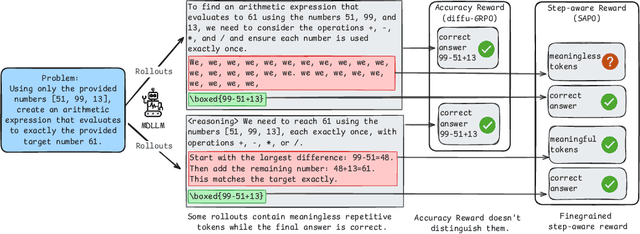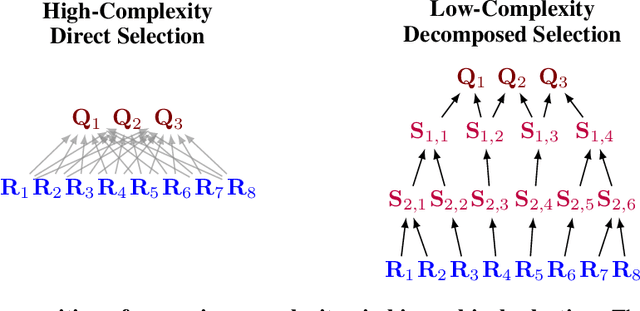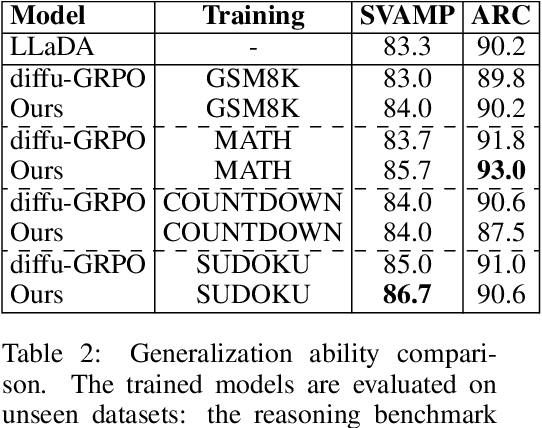Kun Zhang
Max Planck Institute for Intelligent Systems
Optimizing Sensor Placement in Urban Storm Sewers: A Data-Driven Sparse Sensing Approach
Nov 06, 2025Abstract:Urban surface water flooding, triggered by intense rainfall overwhelming drainage systems, is increasingly frequent and widespread. While flood prediction and monitoring in high spatial-temporal resolution are desired, practical constraints in time, budget, and technology hinder its full implementation. How to monitor urban drainage networks and predict flow conditions under constrained resource is a major challenge. This study presents a data-driven sparse sensing (DSS) framework, integrated with EPA-SWMM, to optimize sensor placement and reconstruct peak flowrates in a stormwater system, using the Woodland Avenue catchment in Duluth, Minnesota, as a case study. We utilized a SWMM model to generate a training dataset of peak flowrate profiles across the stormwater network. Furthermore, we applied DSS - leveraging singular value decomposition for dimensionality reduction and QR factorization for sensor allocation - to identify the optimal monitoring nodes based on the simulated training dataset. We then validated the representativeness of these identified monitoring nodes by comparing the DSS-reconstructed peak flowrate profiles with those obtained from SWMM. Three optimally placed sensors among 77 nodes achieved satisfactory reconstruction performance with Nash-Sutcliffe Efficiency (NSE) values of 0.92-0.95 (25th to 75th percentiles). In addition, the model showed good robustness to uncertainty in measurements. Its robustness to sensor failures is location-dependent and improves with the number of sensors deployed. The framework balances computational efficiency and physical interpretability, enabling high-accuracy flow reconstruction with minimal sensors. This DSS framework can be further integrated with predictive models to realize flood early warning and real-time control under limited sensing and monitoring resource.
Identification of Causal Direction under an Arbitrary Number of Latent Confounders
Oct 26, 2025Abstract:Recovering causal structure in the presence of latent variables is an important but challenging task. While many methods have been proposed to handle it, most of them require strict and/or untestable assumptions on the causal structure. In real-world scenarios, observed variables may be affected by multiple latent variables simultaneously, which, generally speaking, cannot be handled by these methods. In this paper, we consider the linear, non-Gaussian case, and make use of the joint higher-order cumulant matrix of the observed variables constructed in a specific way. We show that, surprisingly, causal asymmetry between two observed variables can be directly seen from the rank deficiency properties of such higher-order cumulant matrices, even in the presence of an arbitrary number of latent confounders. Identifiability results are established, and the corresponding identification methods do not even involve iterative procedures. Experimental results demonstrate the effectiveness and asymptotic correctness of our proposed method.
Thought Communication in Multiagent Collaboration
Oct 23, 2025Abstract:Natural language has long enabled human cooperation, but its lossy, ambiguous, and indirect nature limits the potential of collective intelligence. While machines are not subject to these constraints, most LLM-based multi-agent systems still rely solely on natural language, exchanging tokens or their embeddings. To go beyond language, we introduce a new paradigm, thought communication, which enables agents to interact directly mind-to-mind, akin to telepathy. To uncover these latent thoughts in a principled way, we formalize the process as a general latent variable model, where agent states are generated by an unknown function of underlying thoughts. We prove that, in a nonparametric setting without auxiliary information, both shared and private latent thoughts between any pair of agents can be identified. Moreover, the global structure of thought sharing, including which agents share which thoughts and how these relationships are structured, can also be recovered with theoretical guarantees. Guided by the established theory, we develop a framework that extracts latent thoughts from all agents prior to communication and assigns each agent the relevant thoughts, along with their sharing patterns. This paradigm naturally extends beyond LLMs to all modalities, as most observational data arise from hidden generative processes. Experiments on both synthetic and real-world benchmarks validate the theory and demonstrate the collaborative advantages of thought communication. We hope this work illuminates the potential of leveraging the hidden world, as many challenges remain unsolvable through surface-level observation alone, regardless of compute or data scale.
Score-based Greedy Search for Structure Identification of Partially Observed Linear Causal Models
Oct 05, 2025Abstract:Identifying the structure of a partially observed causal system is essential to various scientific fields. Recent advances have focused on constraint-based causal discovery to solve this problem, and yet in practice these methods often face challenges related to multiple testing and error propagation. These issues could be mitigated by a score-based method and thus it has raised great attention whether there exists a score-based greedy search method that can handle the partially observed scenario. In this work, we propose the first score-based greedy search method for the identification of structure involving latent variables with identifiability guarantees. Specifically, we propose Generalized N Factor Model and establish the global consistency: the true structure including latent variables can be identified up to the Markov equivalence class by using score. We then design Latent variable Greedy Equivalence Search (LGES), a greedy search algorithm for this class of model with well-defined operators, which search very efficiently over the graph space to find the optimal structure. Our experiments on both synthetic and real-life data validate the effectiveness of our method (code will be publicly available).
Step-Aware Policy Optimization for Reasoning in Diffusion Large Language Models
Oct 02, 2025



Abstract:Diffusion language models (dLLMs) offer a promising, non-autoregressive paradigm for text generation, yet training them for complex reasoning remains a key challenge. Current reinforcement learning approaches often rely on sparse, outcome-based rewards, which can reinforce flawed reasoning paths that lead to coincidentally correct answers. We argue that this stems from a fundamental mismatch with the natural structure of reasoning. We first propose a theoretical framework that formalizes complex problem solving as a hierarchical selection process, where an intractable global constraint is decomposed into a series of simpler, localized logical steps. This framework provides a principled foundation for algorithm design, including theoretical insights into the identifiability of this latent reasoning structure. Motivated by this theory, we identify unstructured refinement -- a failure mode where a model's iterative steps do not contribute meaningfully to the solution -- as a core deficiency in existing methods. We then introduce Step-Aware Policy Optimization (SAPO), a novel RL algorithm that aligns the dLLM's denoising process with the latent reasoning hierarchy. By using a process-based reward function that encourages incremental progress, SAPO guides the model to learn structured, coherent reasoning paths. Our empirical results show that this principled approach significantly improves performance on challenging reasoning benchmarks and enhances the interpretability of the generation process.
Results of the NeurIPS 2023 Neural MMO Competition on Multi-task Reinforcement Learning
Aug 17, 2025Abstract:We present the results of the NeurIPS 2023 Neural MMO Competition, which attracted over 200 participants and submissions. Participants trained goal-conditional policies that generalize to tasks, maps, and opponents never seen during training. The top solution achieved a score 4x higher than our baseline within 8 hours of training on a single 4090 GPU. We open-source everything relating to Neural MMO and the competition under the MIT license, including the policy weights and training code for our baseline and for the top submissions.
Algorithmic Fairness amid Social Determinants: Reflection, Characterization, and Approach
Aug 10, 2025



Abstract:Social determinants are variables that, while not directly pertaining to any specific individual, capture key aspects of contexts and environments that have direct causal influences on certain attributes of an individual. Previous algorithmic fairness literature has primarily focused on sensitive attributes, often overlooking the role of social determinants. Our paper addresses this gap by introducing formal and quantitative rigor into a space that has been shaped largely by qualitative proposals regarding the use of social determinants. To demonstrate theoretical perspectives and practical applicability, we examine a concrete setting of college admissions, using region as a proxy for social determinants. Our approach leverages a region-based analysis with Gamma distribution parameterization to model how social determinants impact individual outcomes. Despite its simplicity, our method quantitatively recovers findings that resonate with nuanced insights in previous qualitative debates, that are often missed by existing algorithmic fairness approaches. Our findings suggest that mitigation strategies centering solely around sensitive attributes may introduce new structural injustice when addressing existing discrimination. Considering both sensitive attributes and social determinants facilitates a more comprehensive explication of benefits and burdens experienced by individuals from diverse demographic backgrounds as well as contextual environments, which is essential for understanding and achieving fairness effectively and transparently.
SmartCLIP: Modular Vision-language Alignment with Identification Guarantees
Jul 29, 2025Abstract:Contrastive Language-Image Pre-training (CLIP)~\citep{radford2021learning} has emerged as a pivotal model in computer vision and multimodal learning, achieving state-of-the-art performance at aligning visual and textual representations through contrastive learning. However, CLIP struggles with potential information misalignment in many image-text datasets and suffers from entangled representation. On the one hand, short captions for a single image in datasets like MSCOCO may describe disjoint regions in the image, leaving the model uncertain about which visual features to retain or disregard. On the other hand, directly aligning long captions with images can lead to the retention of entangled details, preventing the model from learning disentangled, atomic concepts -- ultimately limiting its generalization on certain downstream tasks involving short prompts. In this paper, we establish theoretical conditions that enable flexible alignment between textual and visual representations across varying levels of granularity. Specifically, our framework ensures that a model can not only \emph{preserve} cross-modal semantic information in its entirety but also \emph{disentangle} visual representations to capture fine-grained textual concepts. Building on this foundation, we introduce \ours, a novel approach that identifies and aligns the most relevant visual and textual representations in a modular manner. Superior performance across various tasks demonstrates its capability to handle information misalignment and supports our identification theory. The code is available at https://github.com/Mid-Push/SmartCLIP.
Should Bias Always be Eliminated? A Principled Framework to Use Data Bias for OOD Generation
Jul 22, 2025Abstract:Most existing methods for adapting models to out-of-distribution (OOD) domains rely on invariant representation learning to eliminate the influence of biased features. However, should bias always be eliminated -- and if not, when should it be retained, and how can it be leveraged? To address these questions, we first present a theoretical analysis that explores the conditions under which biased features can be identified and effectively utilized. Building on this theoretical foundation, we introduce a novel framework that strategically leverages bias to complement invariant representations during inference. The framework comprises two key components that leverage bias in both direct and indirect ways: (1) using invariance as guidance to extract predictive ingredients from bias, and (2) exploiting identified bias to estimate the environmental condition and then use it to explore appropriate bias-aware predictors to alleviate environment gaps. We validate our approach through experiments on both synthetic datasets and standard domain generalization benchmarks. Results consistently demonstrate that our method outperforms existing approaches, underscoring its robustness and adaptability.
Horizontal and Vertical Federated Causal Structure Learning via Higher-order Cumulants
Jul 09, 2025Abstract:Federated causal discovery aims to uncover the causal relationships between entities while protecting data privacy, which has significant importance and numerous applications in real-world scenarios. Existing federated causal structure learning methods primarily focus on horizontal federated settings. However, in practical situations, different clients may not necessarily contain data on the same variables. In a single client, the incomplete set of variables can easily lead to spurious causal relationships, thereby affecting the information transmitted to other clients. To address this issue, we comprehensively consider causal structure learning methods under both horizontal and vertical federated settings. We provide the identification theories and methods for learning causal structure in the horizontal and vertical federal setting via higher-order cumulants. Specifically, we first aggregate higher-order cumulant information from all participating clients to construct global cumulant estimates. These global estimates are then used for recursive source identification, ultimately yielding a global causal strength matrix. Our approach not only enables the reconstruction of causal graphs but also facilitates the estimation of causal strength coefficients. Our algorithm demonstrates superior performance in experiments conducted on both synthetic data and real-world data.
 Add to Chrome
Add to Chrome Add to Firefox
Add to Firefox Add to Edge
Add to Edge